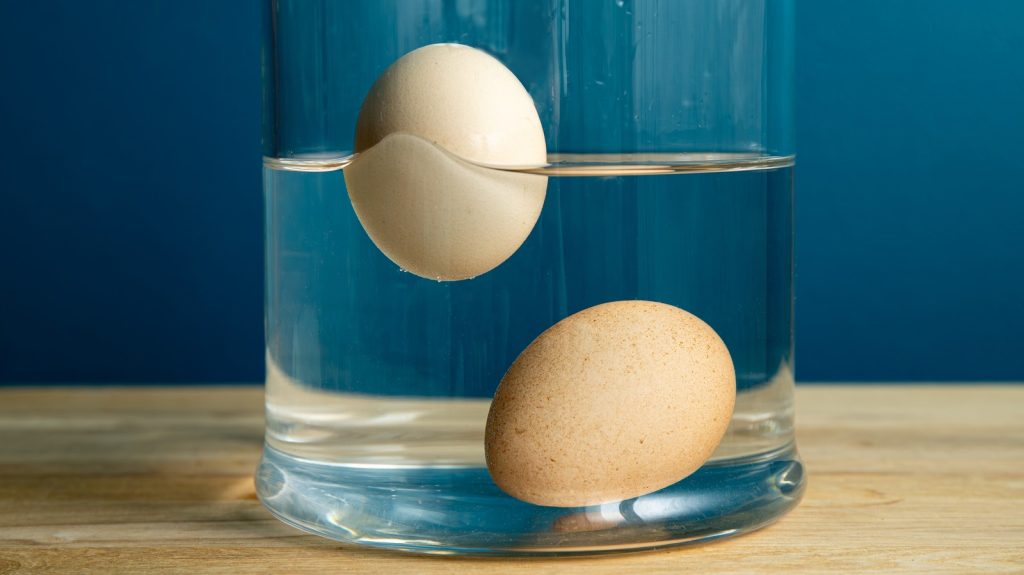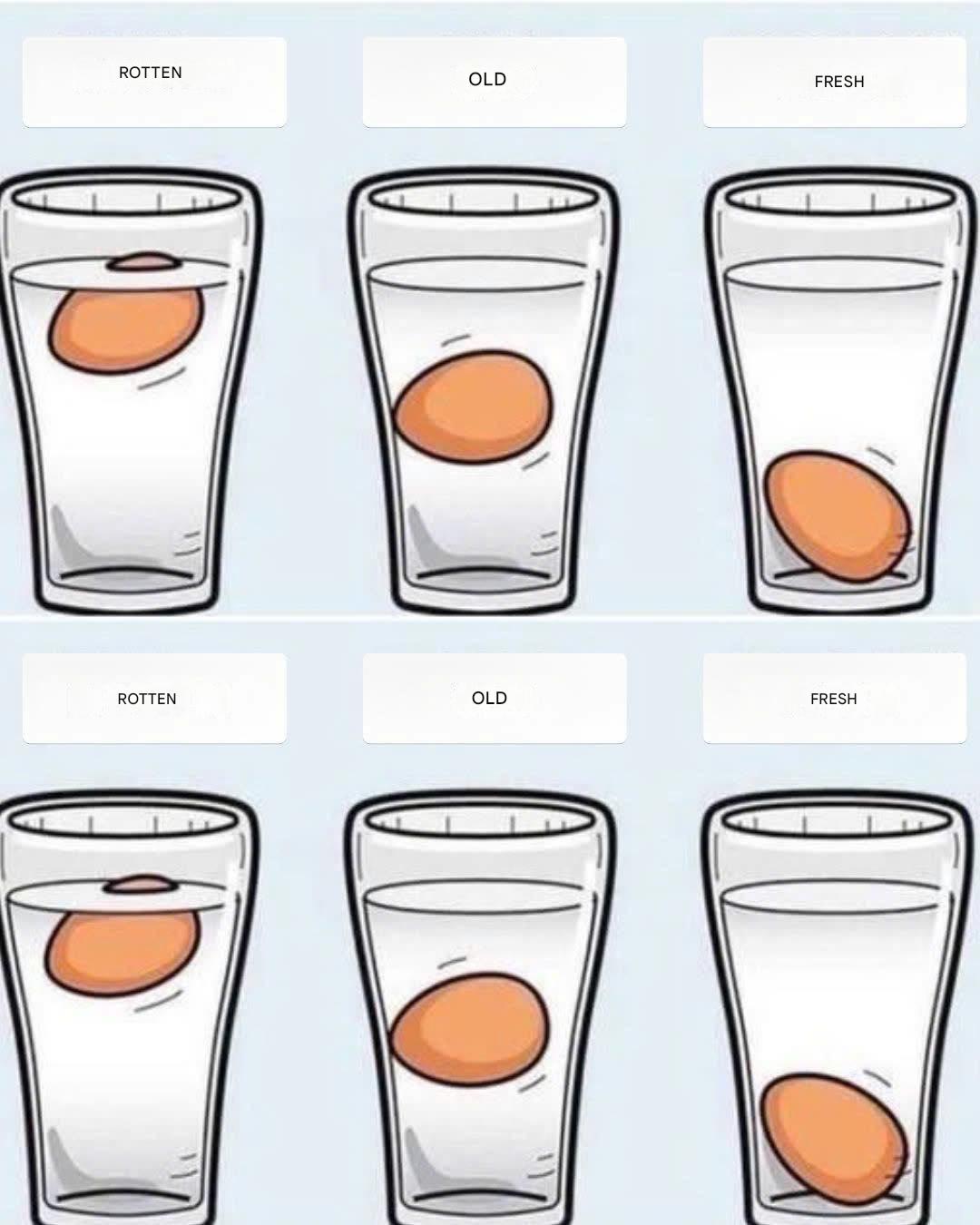What to do:
- Fill a glass or bowl three-quarters full with cold water.
- Gently drop the egg into the water and observe what happens:
- If the egg floats at the top: It is no longer safe to eat. Over time, air builds up inside, causing the egg to float.
- If it tilts upwards or stands at one end: This is an older egg, but still safe to use. Just keep in mind that the quality may not be the best.
- If it sinks and lies flat at the bottom: it’s fresh and perfect for cooking!
Additional Tips:

- Inspect the shell: Make sure the shell is clean and not cracked. Cracks can let bacteria in, increasing the risk of contamination.
- Use your nose if necessary: If you are unsure after the water test, crack the egg into a separate bowl. A bad egg will have a strong, unpleasant smell – if it does, throw it away immediately.
- Store eggs properly: Store them in the refrigerator, ideally on a middle shelf where the temperature remains stable, not in the door.
- Make good use of older eggs: While they may not be the best for things like fried eggs or omelets, slightly older eggs are still great in baked goods like cakes and muffins.
